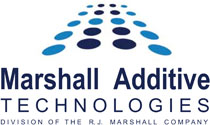By: Jim & Anne Innes
Since this is our very first blog, we will present an overview here on the topic of flame retardants as used today in polymers or plastics. Flame retardants are chemical compounds (and there are lots of them covering a broad range of chemistries, each different from the next) either added to or reacted into polymers. Their purpose is to help retard the burning or pyrolysis process.
Flame retardants do not stop burning. Rather they slow down the burning process. In theory and in a hypothetical scenario where all elements in a furnished room are flame retardant, the retardation in the burning process has been proven to provide many extra valuable seconds of escape time for human victims in such a scenario… extra seconds which can lead to the difference between life and death in a full room fire.
Flame retardant effectiveness is measured by using very specific standardized tests. These tests are developed for specific applications and sometimes even for specific product types. Specific applications include building products, electrical or electronic components, electrical wire and cable, automotive or other transportation products and components, fabric, and many others. Specific product types might include films for example but only those that are very thin or thicker injection molded plastic components. The testing protocols and measurements are very specific to the application so a FR technologist (someone who is investigating how best to flame retard for a particular product application) should first ask what is the application and what test standard must be met. Only with these answers can an evaluation of available FR product technologies take place and a final FR product properly chosen to suit the application.
So you may ask: “Just what are all of these flame retardant technologies?” Well, that is a simple question with a very complicated answer. Simply put, there are several different FR mechanisms. Some FR’s work by cooling, some work by dilution, some work by charring, some work through chemical reaction inhibition, and the list goes on. In fact, FR experts usually start by describing three classic FR systems. And to understand these let’s look first at what a fire is and how things actually burn.
There are three elements needed to sustain burning. Can you name them? FR experts usually display these elements in a diagram called “the fire triangle”. At the corners of the triangle are fuel, heat, and oxygen. If any one of these three elements is missing, there can be no fire! So, if you remove one of these, there can be no fire. If you limit any one of these, or maybe two, or maybe all three, you are making it a lot harder for that fire to maintain itself and to grow. The various FR technologies currently used today target one or more these elements. Sounds simple, right? But they do so in a vast number of ways.
So you should be asking now: “Just how do these FR technologies work?” Well we simply cannot in a simple blog provide a full and complete answer. Indeed there have been hundreds of books and thousands of papers written on this topic. So we will start our next post by offering just a few insights on the classic FR system: halogen FR’s.
First, we must state here something that is very important and in fact possibly the most important statement today: “ALL FLAME RETARDANTS ARE NOT CREATED EQUAL”. If you take nothing else away from this blog, please do take that statement with you. Even within the same FR technology class, like the halogen flame retardants for example, all FR products are not equal. Each flame retardant is different from the next, in structural chemistry, in mechanism, in efficiency and effectiveness, in cost, in use level, in applicable polymers, and the list goes on.
